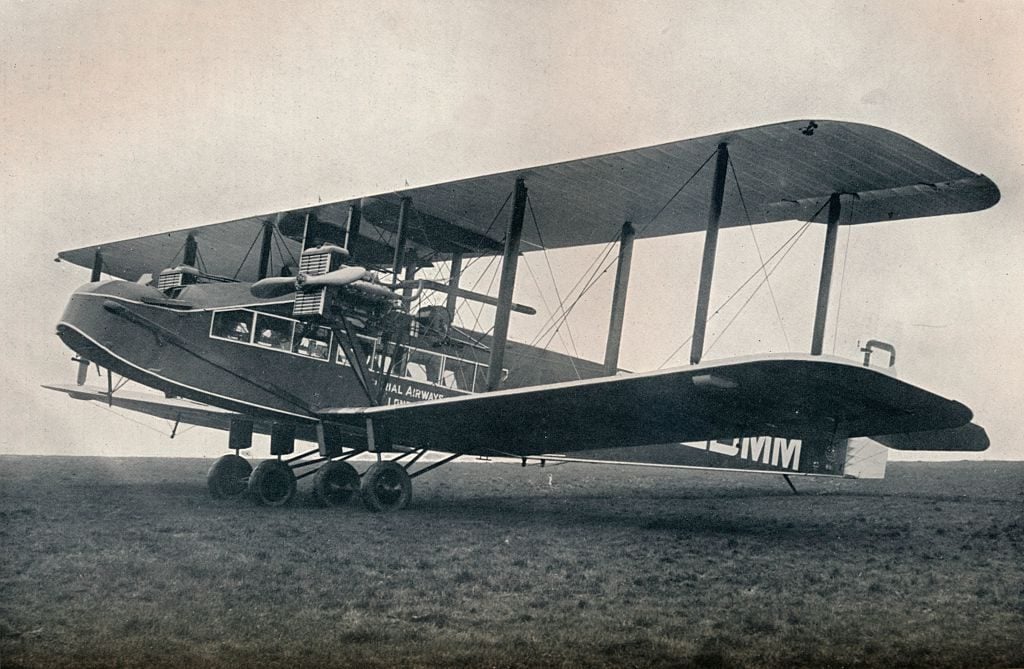
First in inflight service
The first airline meals—pre-packed, cold lunch boxes that were priced at three shillings each—were served in October 1918 on a Handley-Page flight from London to Paris. Four years later, Daimler Airway (which later became part of British Airways), tasked a steward with greeting boarding passengers with glasses of fruit juice, writes Richard Foss in his book Food in the Air and Space: The History of Food and Drink in the Skies. Speaking of beverages, here’s one drink that you should always consider ordering on a plane.
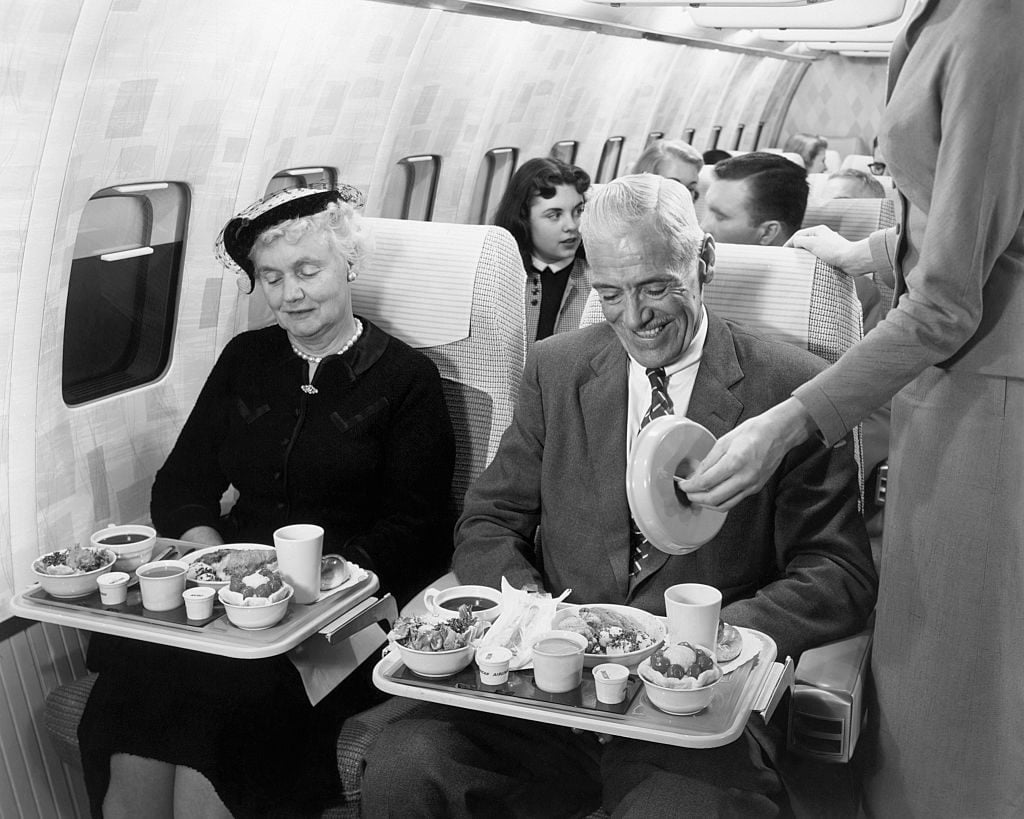
What’s cooking in the kitchen?
In 1936, United Airlines introduced the “world’s first flight kitchen,” as in a kitchen that was owned and operated by the airline to produce inflight food. At the kitchen in Oakland, California, United employees prepared hot meals while also giving special attention to the effects of altitude on the taste of food. These first meals served included a choice of fried chicken or scrambled eggs. These days, some airlines have earned high marks for their food servings; others, well, not so much.
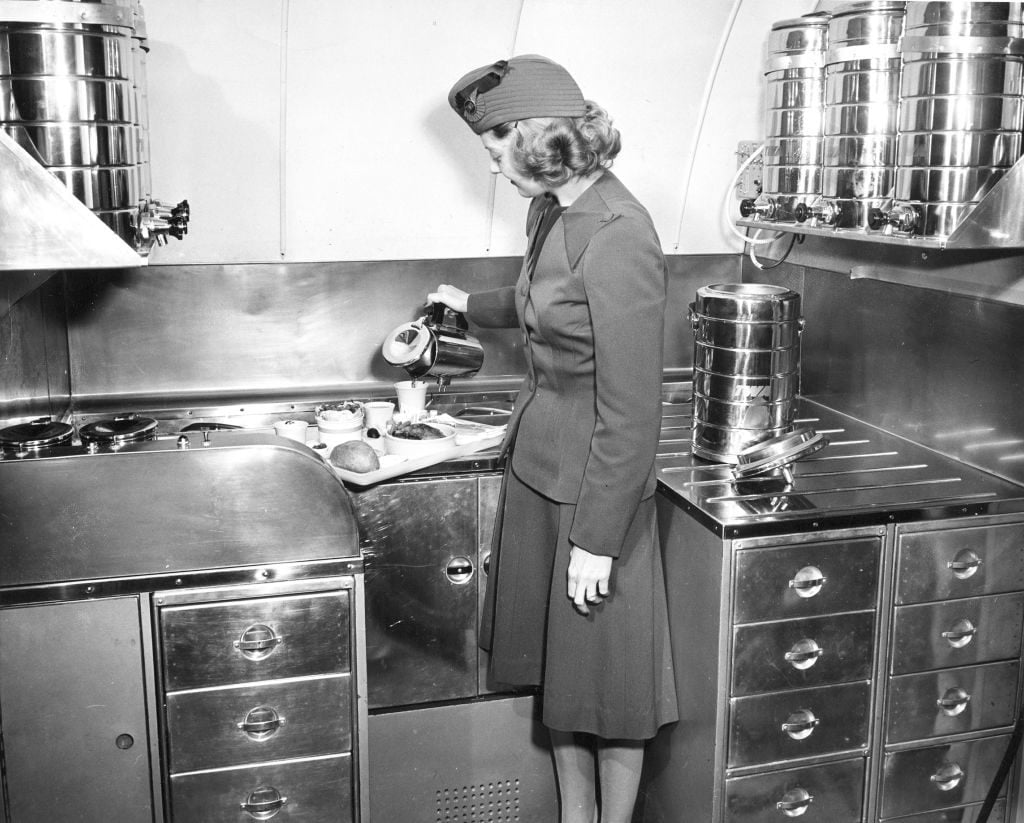
Figuring out frozen food preparation
Frozen food was originally developed to be served to troops on long flights during World War II, but it was not actually available to the public until the war was over. However, TWA took steps toward commercializing this method of food preparation. According to a timeline from the TWA Museum in Kansas City, Missouri, the airline was the first “to develop and use a quick-frozen, pre-cooked method of food preparation, packaging, and shipping, for in-flight meal service.”
TWA staff experimented “with the degree to which meats and vegetables should be separately cooked before placing them in the trays, the percentage of water in stocks so they would be tasty at high altitude, and made the first systematic study of how spices were perceived at high altitude,” Foss wrote.
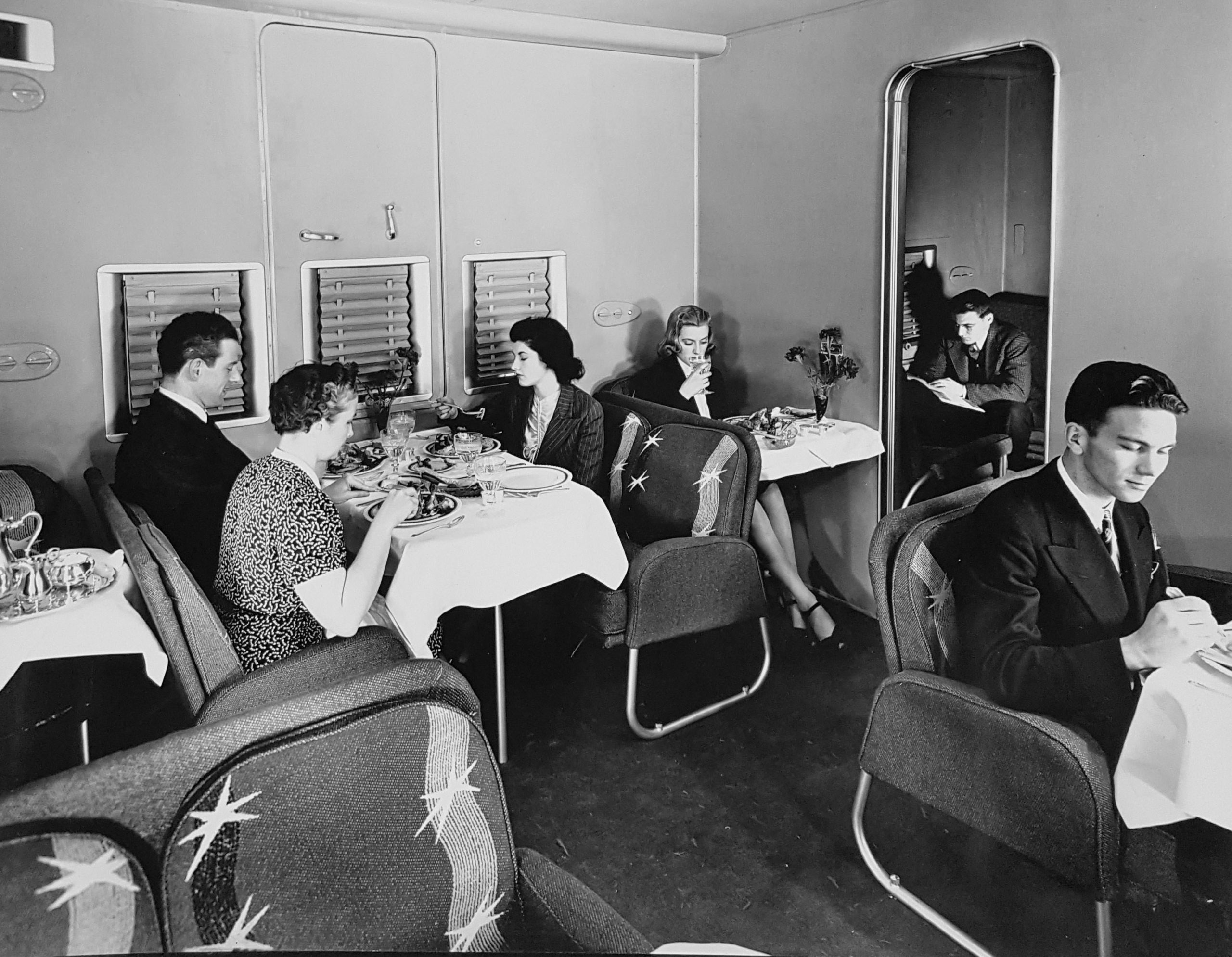
Fine dining aboard The Clipper
From the late 1930s through the 1950s, dubbed the Flying Boat Era, a fixed-wing seaplane with a hull known as “the Clipper” carried out early trans-oceanic flights for Pan Am. The onboard inflight dining service was just as romantic as the journey. Uniformed attendants served refined meals in a dining room with tables adorned with fine china and formal place settings. For example, a “Bermuda Clipper” menu from Pan Am Museum at the Cradle of Aviation Museum in Garden City, New York, listed incredible meal offerings served on this flight to Bermuda flying from New York and Baltimore. The menu’s dishes encompassed consommé julienne, broiled double French lamb chops, fresh string beans with parsley potatoes, and a Belgian endive salad. Hard to believe now, but flying really used to be quite glamorous.
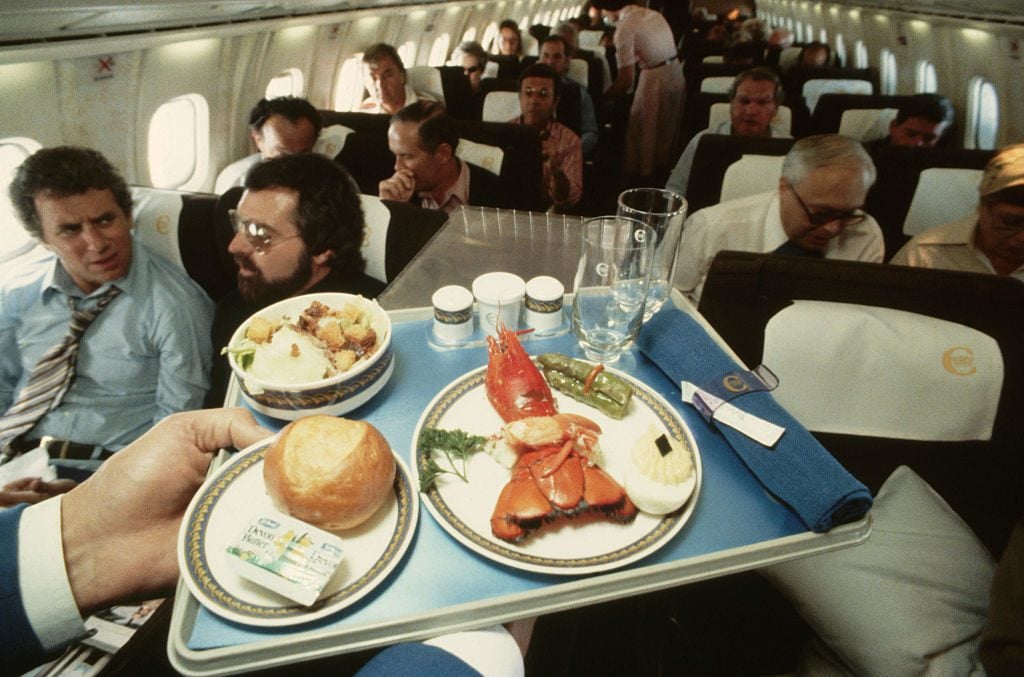
A Parisian influence
PanAm was the epitome of luxury in air travel. From the 50s through the 60s, the airline had a culinary partnership with Maxim’s, a renowned restaurant in Paris. Not only did this French bistro develop the menus for all Pan Am flights, but they also cultivated a Presidential Special service given to first-class passengers. Introduced on the Boeing 377 Stratocruiser, passengers in Pan Am’s first-class cabin enjoyed onboard specialties, starting with presenting hot hors d’oeuvres during cocktail hour. The meal’s pièce de résistance was the main course with gourmet selections including filet mignon, roast duckling bigarade, lobster “Américaine” or rock cornish game hen. Even without multi-course dining on planes today, it’s important to follow these etiquette rules onboard.

The sandwich war
In 1954, Scandinavian Airlines, known as SAS, got into a bind in what’s known as “the Sandwich War.” According to Scandinavian Traveler, what ignited this “war” was when SAS started serving smørrebrød or open-faced sandwiches (a traditional Scandinavian snack) to passengers in its then-new tourist class on its Atlantic flights.
Apparently, this practice was frowned upon by the American air carriers and the United States threatened to revoke SAS’ carrier’s license if the Scandinavian airline didn’t stop serving these free sandwiches. Their argument was that a smørrebrød violated the International Air Transport Association (IATA) rules, in that they were not closed as an American sandwich is. SAS had to pay a fine to the IATA for the incident but the coinciding publicity was priceless. It also resulted in a settlement reached in IATA and SAS, where the smørrebrød could stay but the airline promised to follow the rule of leaving a square inch of the bread visible. Speaking of scandals, here are 10 real-life stories that shook up the fast-food industry.
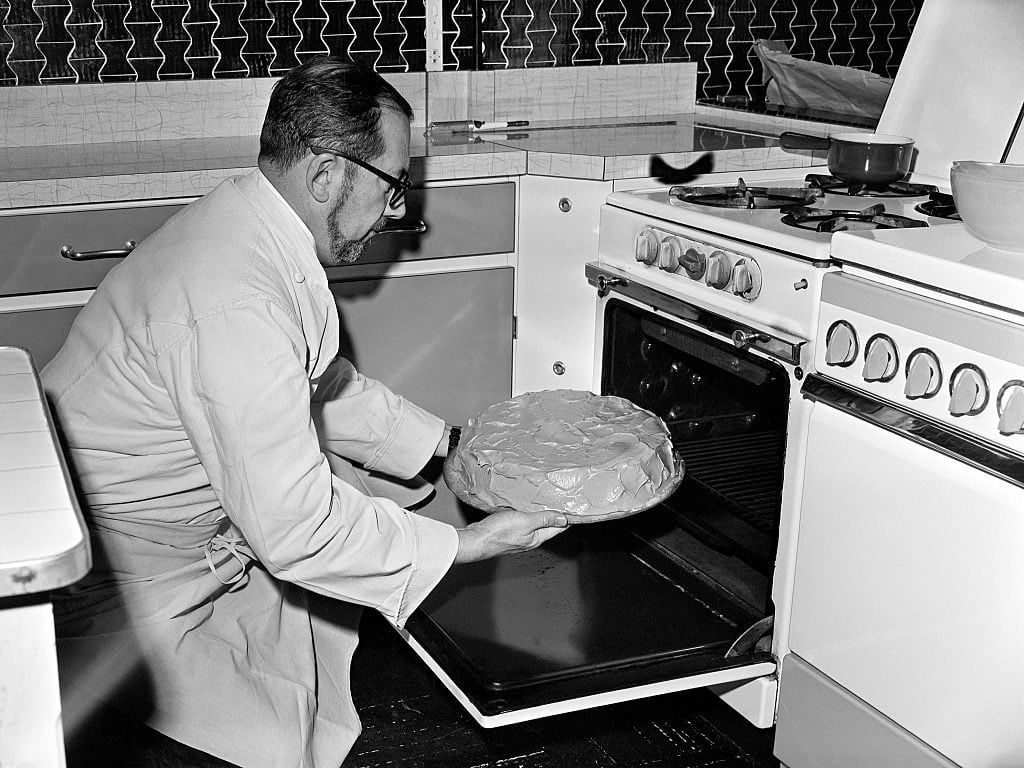
Celebrity chefs step in
Today, it’s no secret that altitude can impact a passenger’s taste buds—it’s why tomato juice tastes better on a plane. According to Foss, this phenomenon was recognized as early as 1939, when United’s food consultant presented about it at the St. Regis Hotel in New York.
Four decades later, French chef and TV host Raymond Oliver started to consult with French airline UTA on its inflight meal service. In 1973, Oliver began reformulating UTA’s meals by increasing the salt, sugar, cream, and fat in recipes created in inflight kitchens, “and the improvement was recognized immediately,” Foss writes.
Since then, celebrity chefs have dispensed their kitchen know-how to airlines, including more recent collaborations between Gordon Ramsay and Singapore Airlines and Daniel Boulud and Air France.
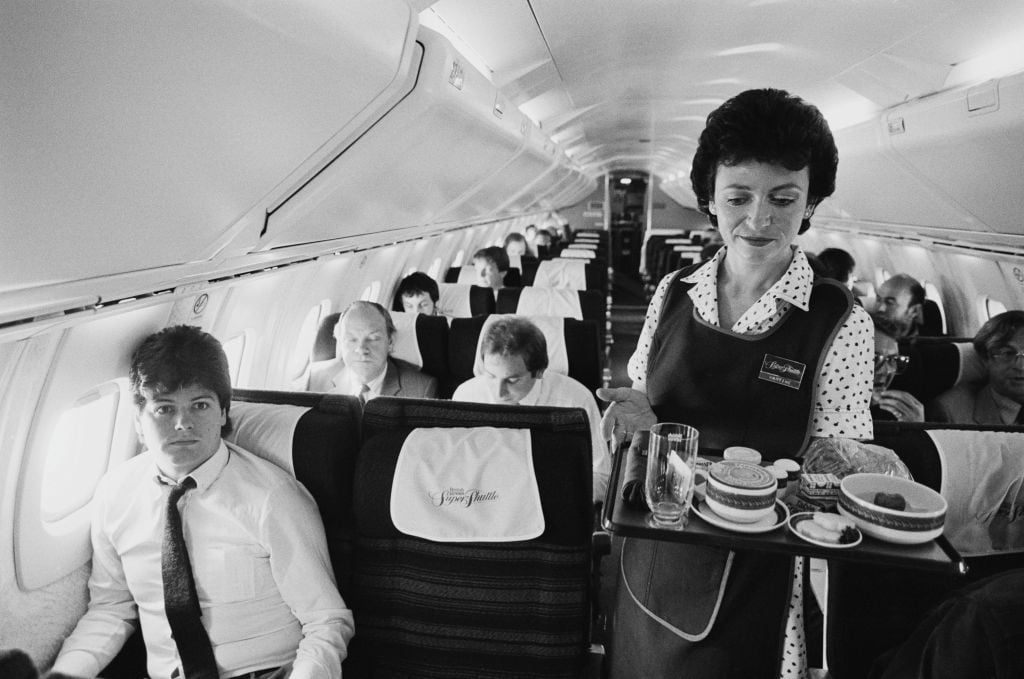
The flight of the Concorde
In the 70s, inflight meal service also reached new heights with the arrival of the Concorde, operated by British Airways and Air France, which made its first superfast transcontinental flight in September 1973. Passengers on the Concorde famously drank Champagne while indulging in caviar. When Concorde ceased flying in 2003, its final onboard menu items included truffles, foie gras, and lobster. While it might be hard to pass such delicacies up, there’s a good reason you should never eat food on planes.
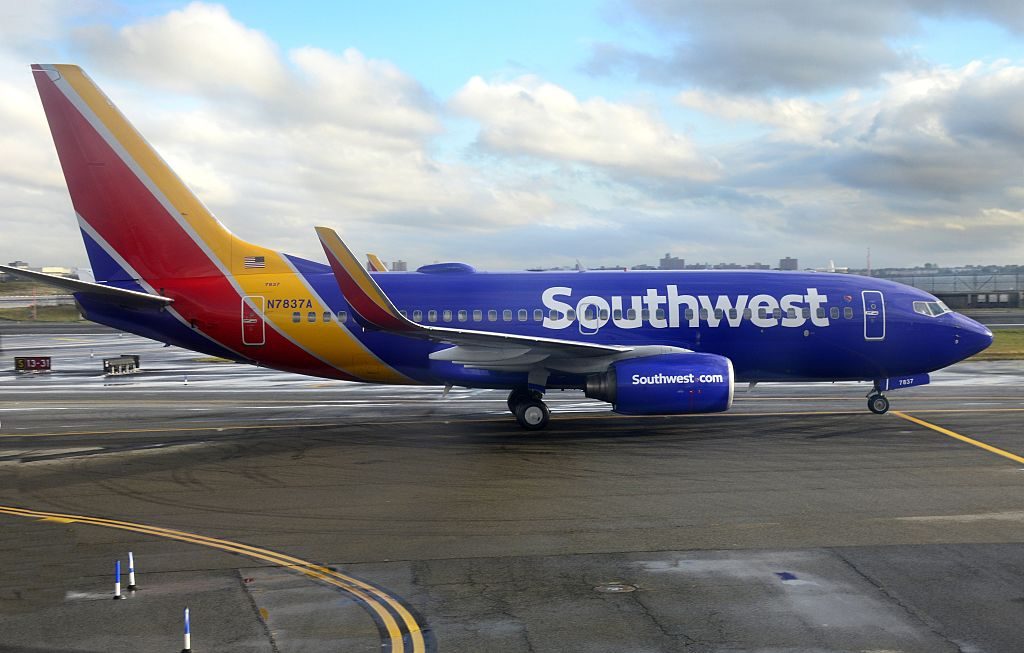
Flying for peanuts
Also in the 70s, the aviation industry began experiencing deregulation which resulted in airlines dropping their fares. The decade also welcomed Southwest Airlines in 1971, who kicked off the tradition of serving peanuts as a mid-flight snack. Except during a small blip for a few months in the 80s, when there was a shortage of peanuts and their price skyrocketed, the Dallas-based airline has almost always made them available to passengers until recently and even incorporated the legume into its slogans, including “fly for peanuts.” Then in 2018, in consideration of passengers with peanut-related allergies, the airline decided to remove peanuts as an inflight snack option. Find out the things passengers aren’t allowed to do on planes anymore.
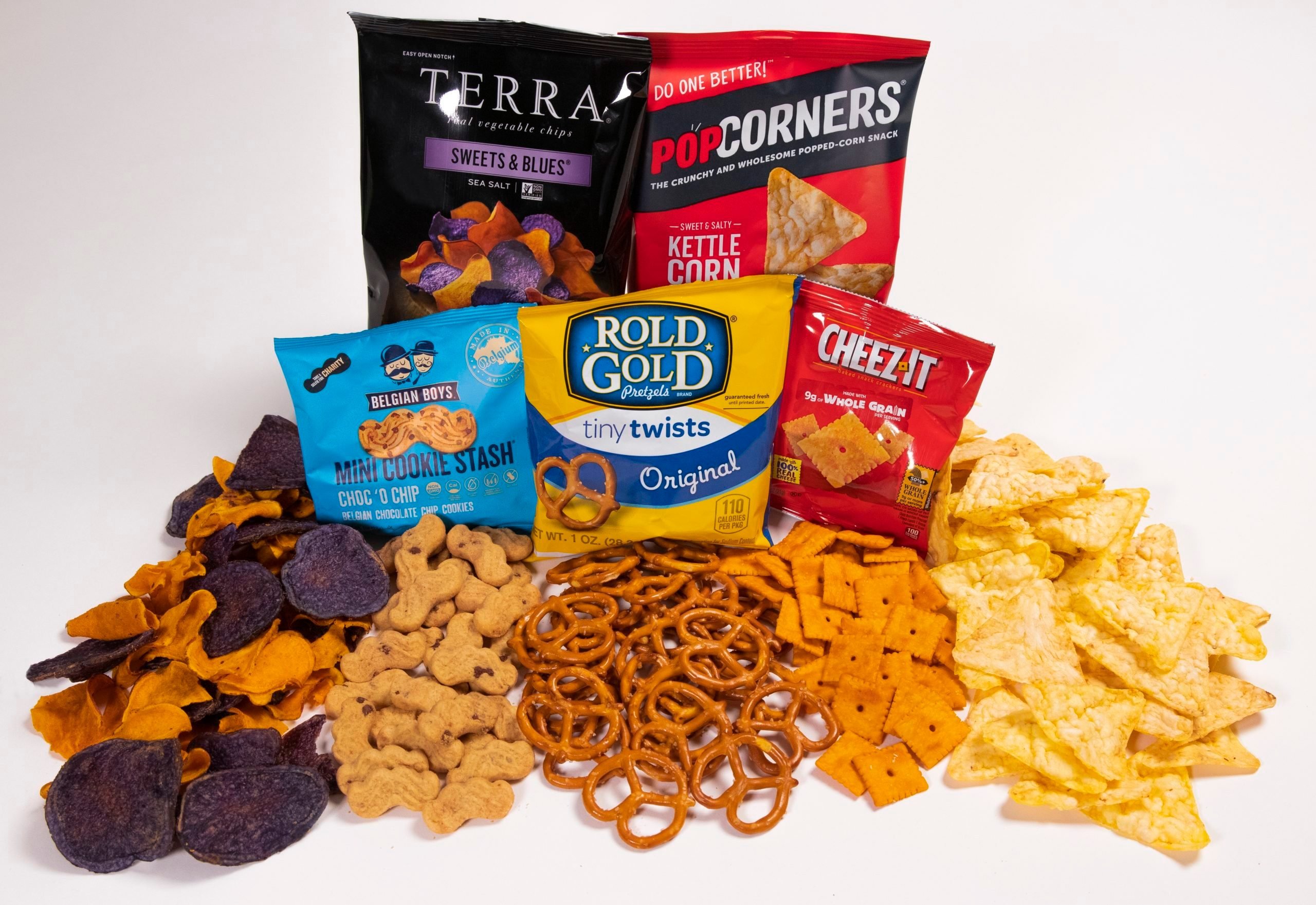
Feeling blue for chips
Since launching in 2000, JetBlue has been known for its free onboard snack selection but one particular item is its signature offering—TERRA Sweets & Blues potato chips. These interestingly colored chips are provided for the airline, but the business relationship between these two companies goes further than this snack bag. In 2015, JetBlue and the TERRA brand unveiled plans for the T5 Farm, a blue potato farm and produce garden at Terminal 5 (T5) at John F. Kennedy International Airport in New York City. At one point, each harvest produces 1,000 pounds of blue potatoes—though sadly the farm is shutting down.
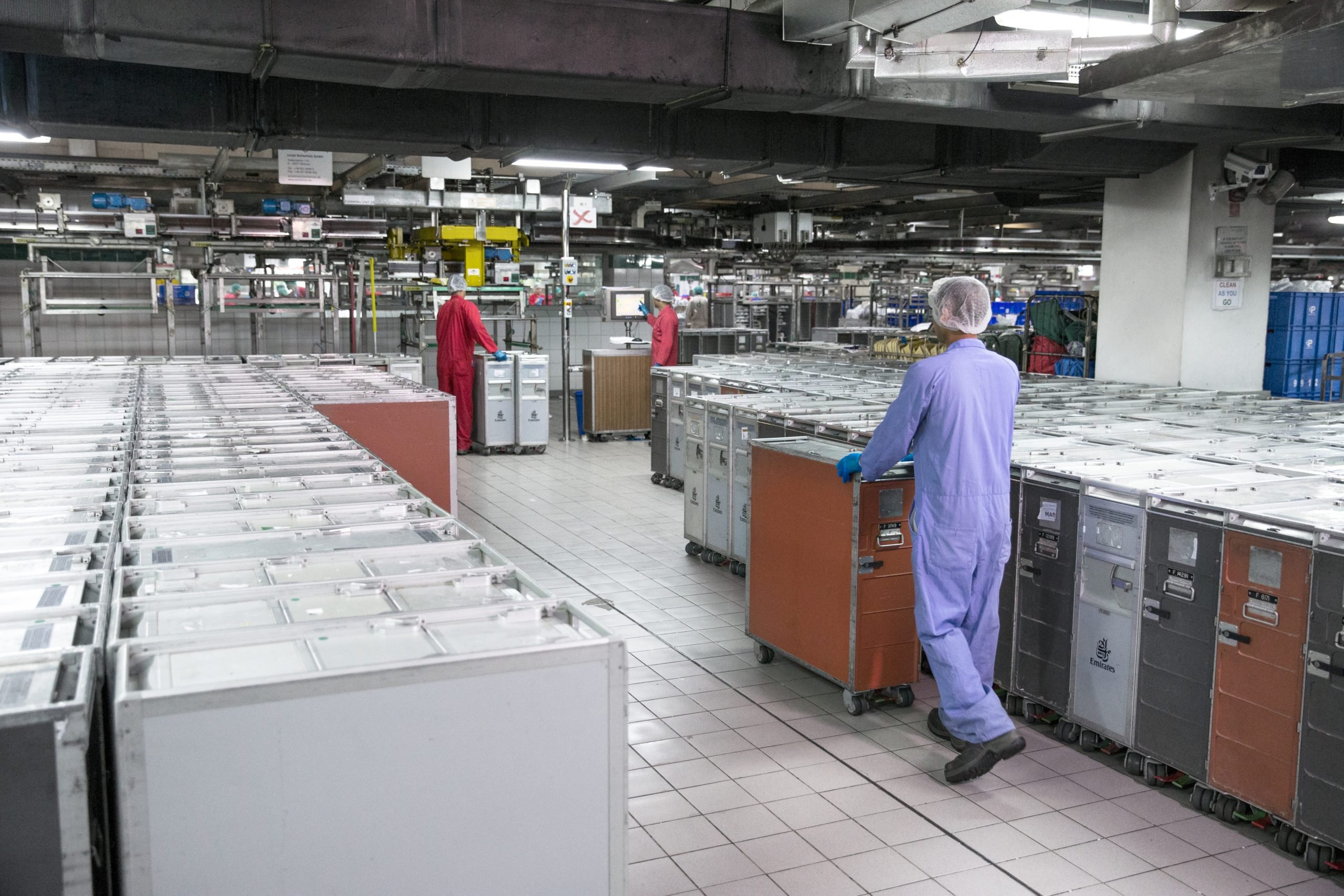
The largest catering facility of its kind
Today, Emirates holds the distinction of having the world’s largest flight catering facility. Located at Dubai Investment Park in the United Arab Emirates, the Emirates Flight Catering facility produces an average of 225,000 meals per day and more than 82 million per year. Its team of chefs is comprised of employees of 69 different nationalities who are experienced in every culinary tradition, from preparing sushi for Japanese routes to cooking regional curries for flights to India and beyond.

Farm freshness near the airport
In 2019, Singapore Airlines launched its first Farm-To-Plane partnership with AeroFarms, an indoor vertical farming company based in New Jersey to provide a custom blend of fresh-from-the-farm produce to serve on flights to Singapore, from airports in the New York City region. AeroFarms uses a reclaimed an abandoned steel mill in an industrial area near Newark, New Jersey that it turned into a one-acre indoor vertical farm. The farm can produce the equivalent of 390 acres of locally grown produce with up to 30 harvests each year—even during the height of winter. BYOing your meal? Find out the surprising foods you can—and can’t—bring on a plane.
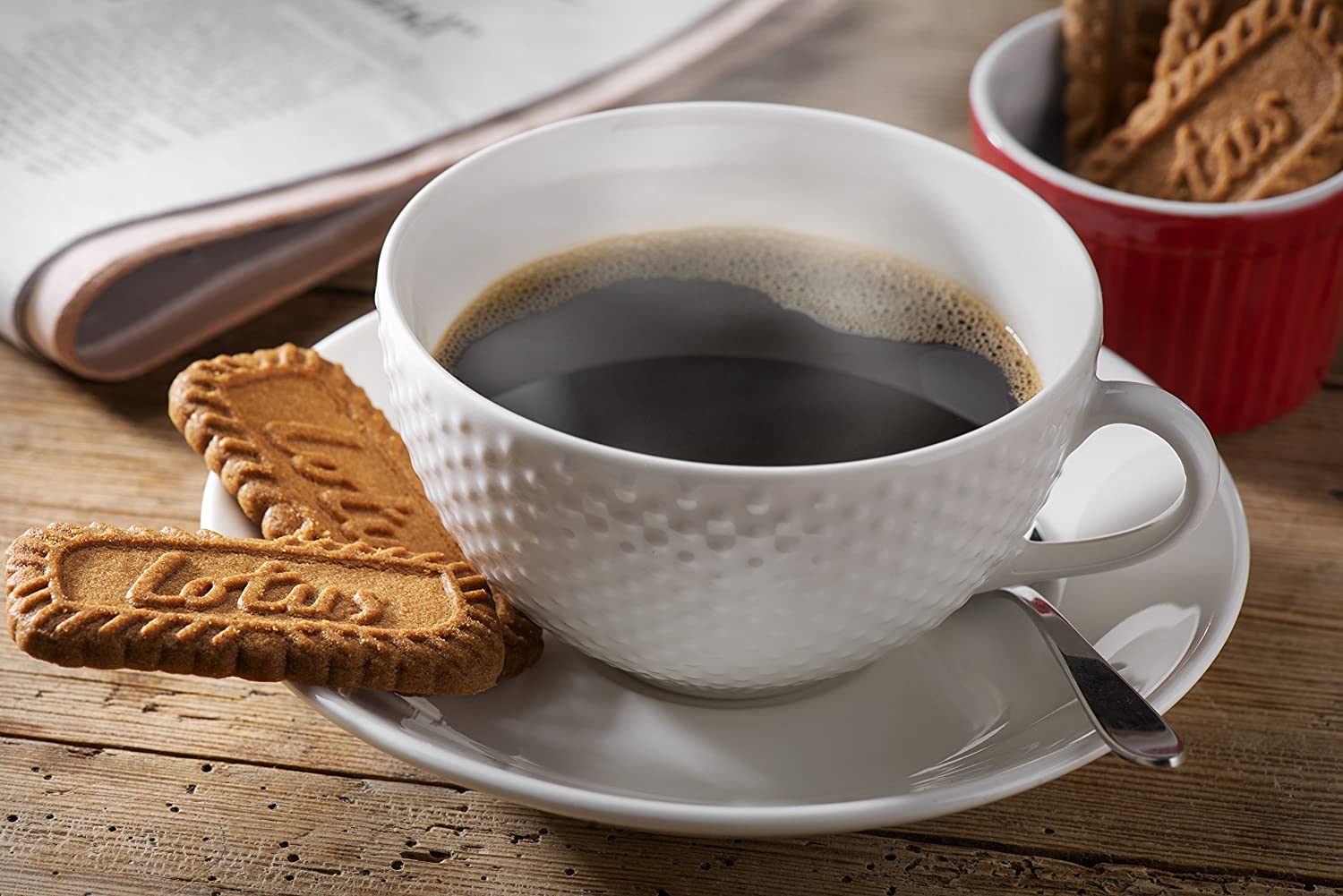
Cookie, come back
Frequent fliers know and love Biscoff cookies, a crunchy, slightly spiced, and caramel flavored treat by Lotus that has made a few headlines on its own. In early 2020, these cookies became the subject of public outcry when United Airlines announced that these Belgian-made biscuits wrapped in red and white foiling would be removed from their inflight selection; another cookie would replace them that March. United was crumbled by its passengers on its decision to switch, especially on Twitter. United relented and announced that the Biscoff will stay. They also learned not to get rid of another European treat, the Stroopwafel. As for their cookie competition, Delta reassured flyers that its offering of Biscoffs wasn’t going bye-bye. In fact, the Biscoff wrappers began displaying the Delta stamp in the late 1990s.
Sources:
- Skift: “17 Milestones in the History of Airlines’ In-Flight Meals”
- United Airlines: “United Airlines: Our history”
- TWA Museum: “TWA First”
- Pan Am: Eras Quick Links
- Pan Am: “A Parisian Tradition”
- Scandinavian Traveler: The Great Sandwich War
- Aerofarms
